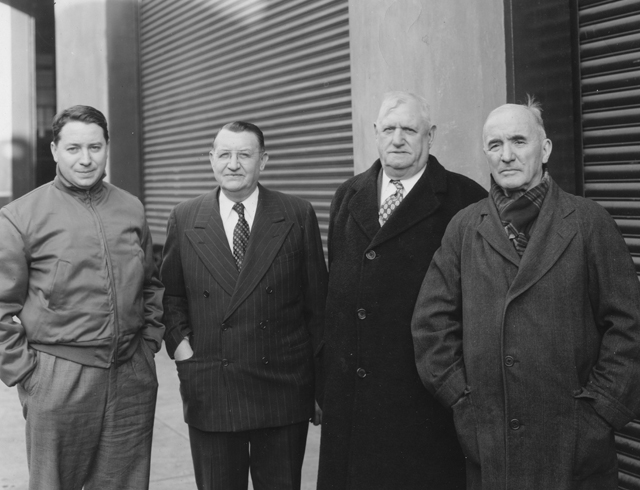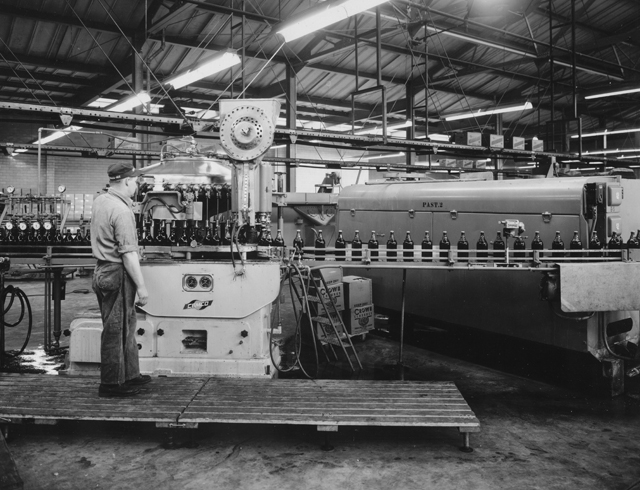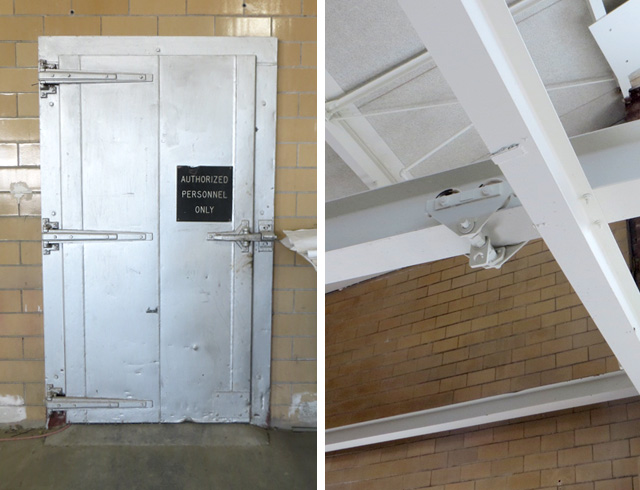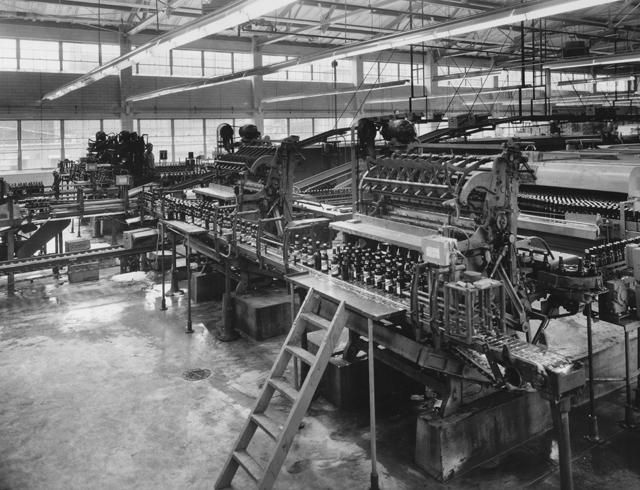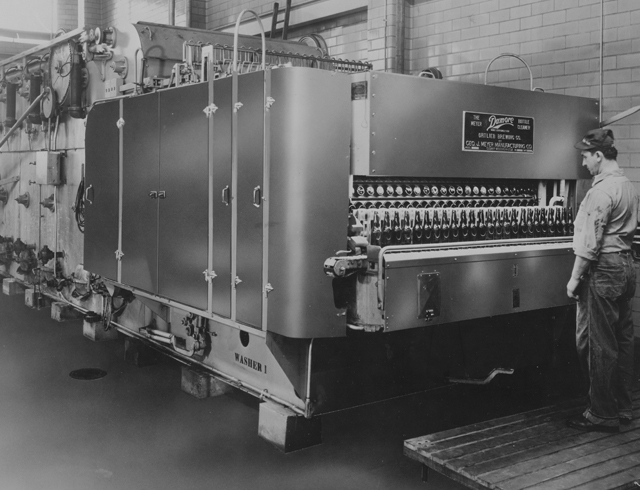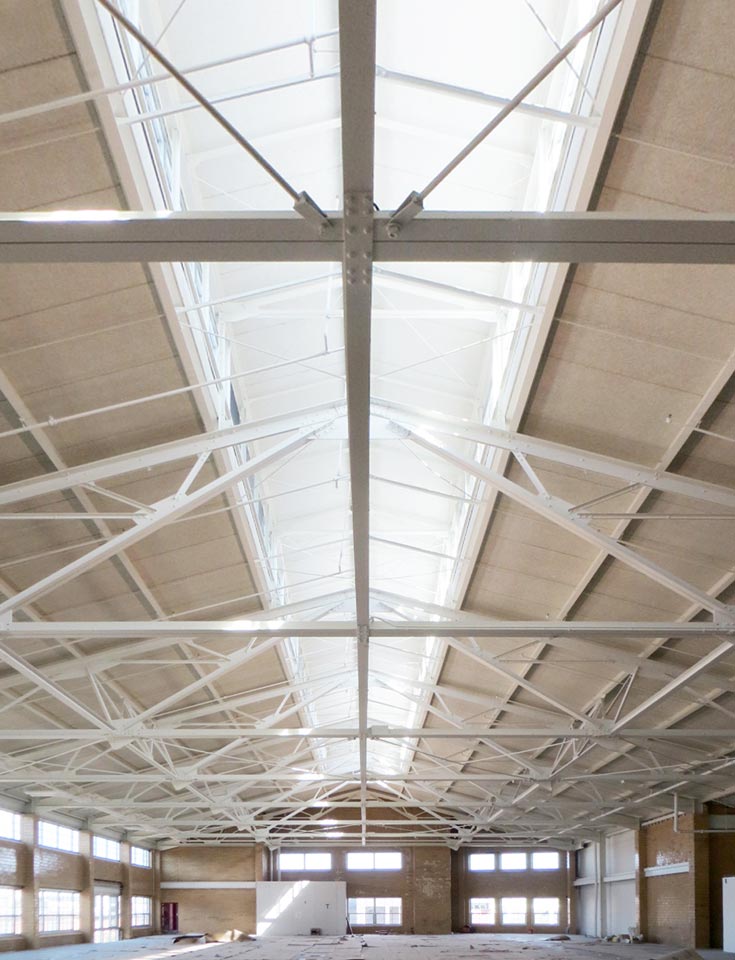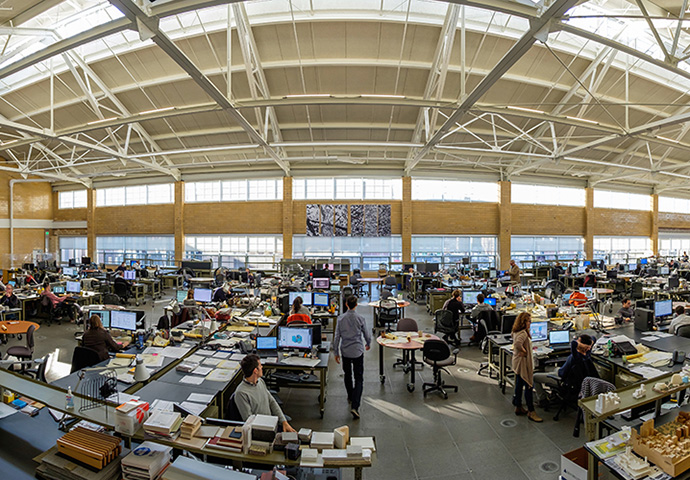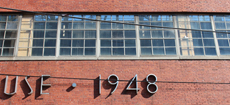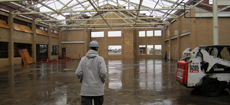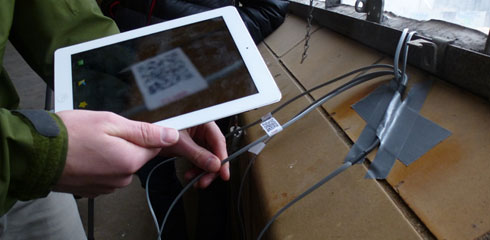A Historic Brewery Transforms
Bottling lines of the original bottling house. An article in American Brewer magazine reported, "Line No. 1 is used for 12 ounce steinie, export and non-returnables as well as 7 ounce splits. Line No. 2 is used mainly for 32 ounce bottles though it also takes 12 ounce bottles and cans."
Courtesy of the Ortlieb family
The historic building that will soon house KieranTimberlake's new architecture studio was once part of a complex of properties belonging to Ortlieb's Brewing Company in the Northern Liberties neighborhood of Philadelphia.
Over four generations, several members of the Ortlieb family worked in the brewing business, including Henry, Albert, William, and Joe Ortlieb, shown here.
Courtesy of the Ortlieb family
The brewery was begun in 1869 by German immigrant Trupert Ortlieb. After fighting in the Union army during the Civil War, he and his wife settled in Philadelphia and had seven children. The brewery was named for the oldest son: Henry F. Ortlieb. According to Philadelphia beer expert Richard Wagner, the Ortlieb brewery established itself as a significant player in the local brewing industry after the repeal of Prohibition, when production jumped from 20-25,000 barrels annually to 100,000 barrels. In 1954, the brewery won the Premium Quality Medal of Leadership at the Munich International Beer Competition.
When it was built in 1948, Ortlieb's bottling house boasted some of the most modern technology in the brewing industry.
Courtesy of the Ortlieb family
Ortlieb's resisted competition from the large national brewers for several years, but in 1981 the brand was sold to Schmidt's, and production was moved elsewhere. In 1997, a descendant of the family, Henry A. Ortlieb, opened Poor Henry's Brewery and Pub in the old bottling house on American Street. However, microbreweries in Philadelphia were not doing well at the time, and Poor Henry's closed in 2000.
Some of the original brewery buildings have been torn down, but the bottling house, constructed in 1948, remains. It was designed by Richard Koelle of William F. Koelle & Co. Like Stephen Kieran and James Timberlake, Koelle studied architecture at the University of Pennsylvania. One of his mentors was Paul Cret.
Remnants of the original bottling house include (left) this door to what was once the refrigerated section of the first floor used to store cases of beer and (right) a gantry beam with pulley mechanism that was used to hoist materials through holes in the floor to the second level.
In 1949, soon after the bottling house opened, the magazine American Brewer published an article claiming that the facility could "boast of some of the most modern facilities in the industry":
Ortlieb's Completes Modern Bottling Plant
By Albert Ortlieb, Secretary in Charge of Operations, Henry F. Ortlieb Brewing Co.
Building materials were chosen with a view toward achieving a low initial cost and reducing future maintenance. The building has a steel skeleton construction with brick and glazed tile walls and aluminum sash windows. The floors are concrete with an acid resisting mixture to eliminate deterioration.
Bottling equipment is located on the top floor, with bottling tanks on the floor below, directly underneath the fillers...One of the most unusual features of this installation, which is advertised as the “million bottle a day plant,” is its materials handling system.
About one-third of the plant area is taken up by the conveyors while the remaining two thirds contain bottling lines and storage facilities...The plant has a loading dock provided with six telescopic Alvey section conveyors for six stations. This makes it possible for six trucks to be unloaded and loaded at the same time from belts having a 30 case a minute capacity. The loading dock has another bay for unloading crowns, labels and other accessories directly onto a platform elevator adjoining the dock.
Bottle capper machinery, with the original windows along the west side of the building visible in the background. The renovation includes the installation of new thermally broken, insulated windows.
Courtesy of the Ortlieb family
Bottle soaker and cleaner
Courtesy of the Ortlieb family
Our renovation of this National Register of Historic Places building has included the replacement of the roof and restoration of the monitor. The original terracotta wall tiling has been kept intact.




